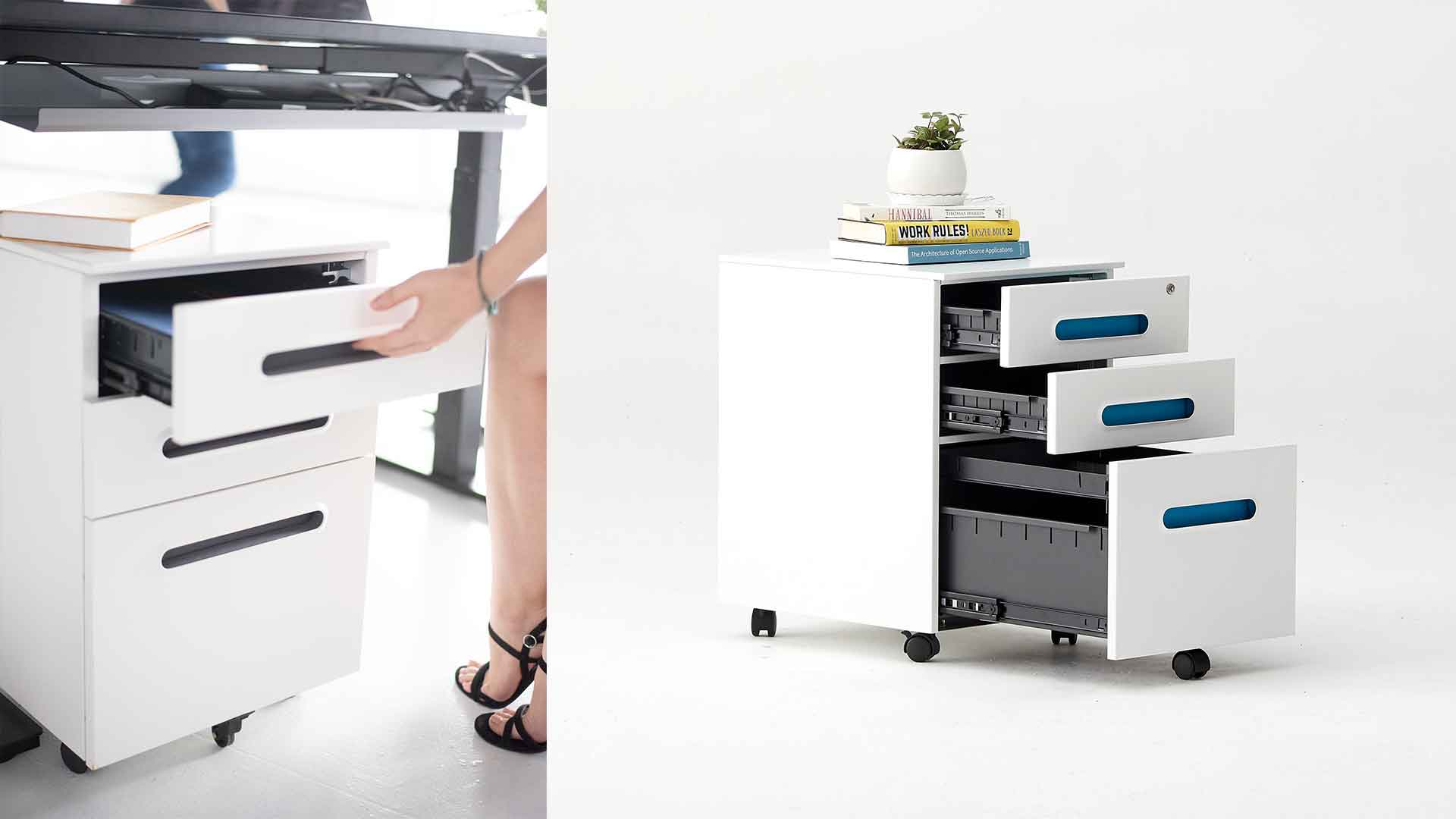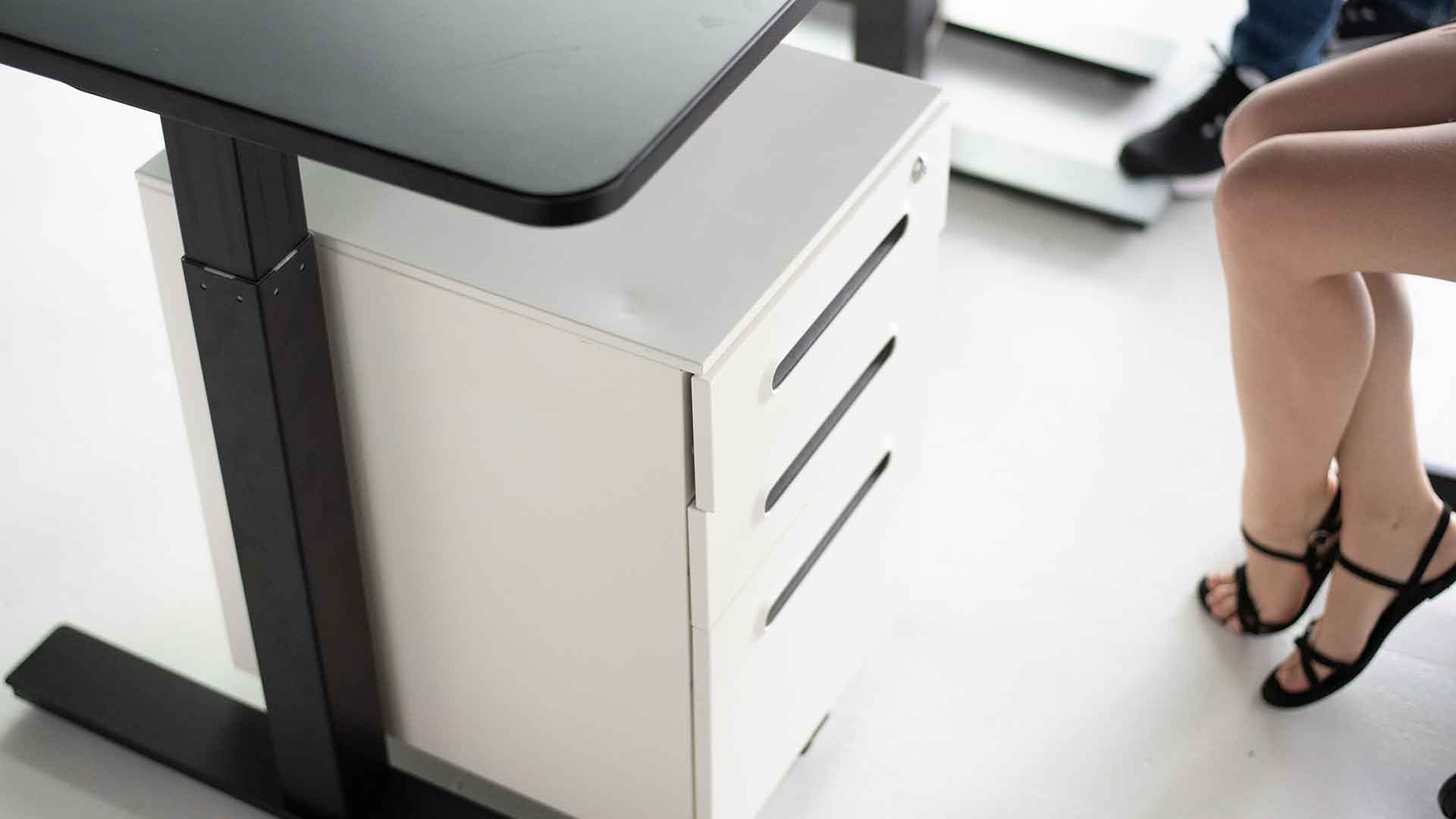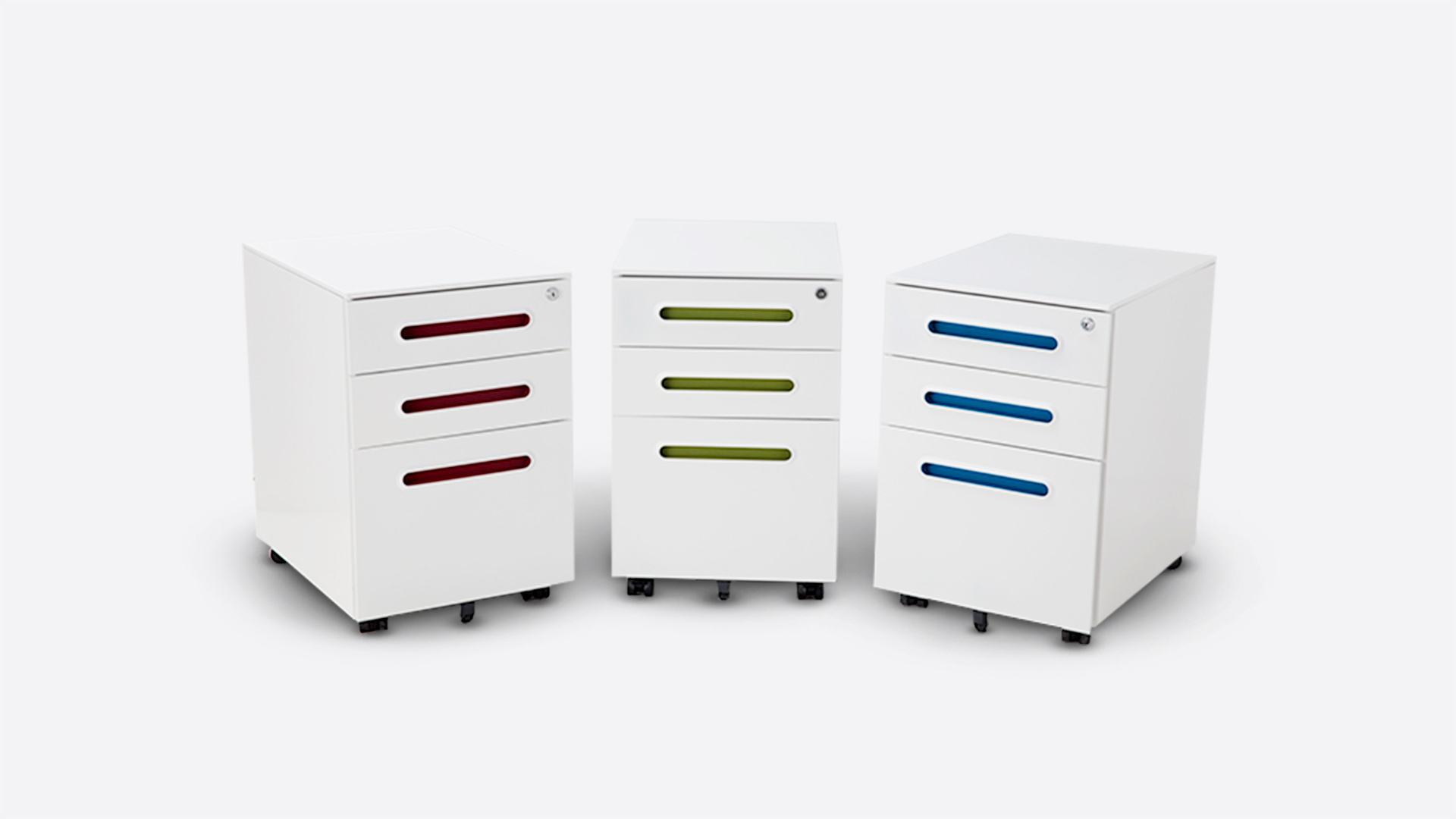/https://storage.googleapis.com/s3-autonomous-upgrade-3/static/upload/images/new_post/how-to-remove-drawers-from-filing-cabinet-177-1589774589641.jpg)
How To Remove File Cabinet Drawers? 4 Effective Ways
Many people have trouble in figuring out how to remove drawers from their filing cabinets. The main reason to remove the file drawers is to move the cabinet to a new location, as drawers carry a lot of weight.
Drawer removal is an important process to repair, repaint, and renovate a filing cabinet. Conventionally, the most common way to remove a drawer from a filing cabinet is to rock it. It involves pulling the drawer all the way out, and then pulling it again so that its wheels come out of the rails. Similarly, the rear wheels of the drawers will come out as you apply more pressure. However, this method can only work with steel filing cabinets that have specific drawers with wheels. As a reason, it can’t be used on drawers with ball bearings.
In addition, there are some filing cabinets with a rocker lever present at the bottom or back of the drawers. You can push the lever to detach the drawer from the main body of the filing cabinet. It is important to understand that rocker levers may be present at the bottom, back or side of the drawer rails varying as per the design of the cabinet. Many steel filing cabinets have a particular release latch present inside the drawers. Intrinsically, it is present on the side panels of each drawer and by pulling it, the entire drawer can be easily removed.
Different Methods of Removal
There are several types of filing cabinets that require specific techniques through which a drawer can be removed. The difference lies in the structure of the cabinets and how the drawers are attached to the main body of the filing cabinet. Some of the important methods used to how to remove drawers are:
1. Friction Disconnect
This technique is the simplest method by which you can remove a drawer from the filing cabinet. It just requires you to pull out the drawer far enough so that the slides get disconnected on their own. There can be some resistance towards the end, however, it is due to the ball retainers that safeguard the drawer from falling down on its own. This mechanism is usually installed on the drawers with load ratings less than 50 lbs.
2. Lever Disconnect
The lever disconnect method is one of the most resilient techniques. Removing file cabinet drawers with a lever disconnect mechanism involves the up and down movement on the spring-loaded lever, present on the inner member of the slide to disconnect. Generally, such mechanisms are fitted with lock-out and stop-out features that are used in pull-out trays in many workstations.
3. Push Latch Disconnect
It is a simple method in which you will have to push a single button that is responsible for triggering the latch. Once the latch is triggered, the inner member of the slide is disconnected from the outer member. Thus, removing the drawer successfully.
4. Rail Disconnect
This method includes attaching and detaching all the slide members that make up for a simple drawer removal. Such drawers are available with or without the latch. The rail disconnect slides are commonly found in retail furniture and filing cabinets with display cases.
The Process
In this section, we have discussed the process of drawer removal from the main filing cabinet in detail. The section covers five different types of drawer systems in detail: Side-Mount Filing Cabinet, Lateral File Cabinet, Self-closing Drawers, Wood Glides, and Drawers with Stabilizer Screws. All five of these drawer systems require the use of different techniques to remove the drawers from the file cabinet.

1. For Side-Mount Filing Cabinets
Many modern filing cabinets utilize side-mount runners fitted with safety locks that prevent the drawer from falling out from the cabinet when pulled outwards. The main purpose of such a design is to allow the drawer to come out completely to allow easy storage of files and documents. Technically, side-mount runners provide more durability and strength to the structure of the cabinet to hold more weight as compared to the bottom-mount runners. However, you do not need any specific tools to remove them from your filing cabinet as they can be easily removed by your fingers, only. Although, if the drawers are heavily loaded, then you can ask the help of an assistant.
The process involves pulling the drawer out until it stops, then placing both your hands on the opposite sides of the drawer. You will have to locate a small horizontal lever on both the sides of the drawer where the two runners are connected. The lever will have two different oval shaped tabs, you will have to push them down. While holding the tabs with your fingers, you will have to pull the drawer towards your body. As soon as you pull the drawer towards yourself, you will hear a small sound of clicking as the runners on the drawer disengage themselves from the runners on the filing cabinet.
As soon as you pull out the drawer, make sure to hold it firmly with both hands. Once removed, you can easily reinstall it by pushing the tab on the back. Many times, the drawer can tip sideways, which means that its lock has not properly disengaged. In such a scenario, you will have to push the tab to release it and easily remove the drawer. Generally, the side-mount runners have specific oval-shaped tabs that can be located easily.
2. For Lateral File Cabinets
Lateral file cabinets play an important role in every office or workplace. It is convenient to use lateral file cabinets as compared to any other filing cabinet as they offer a large storage solution in a small space. You can save hundreds of documents in a single lateral filing cabinet. In addition, they have a solid build quality that allows them to store heavy documents for a long duration of time. However, due to their large size and weight, they are almost impossible to be moved around without emptying them. Hence, it is important to understand how drawers can be removed from such heavy filing cabinets.
In the first step, you will have to empty all the drawers by taking out all the stored documents, files and items, carefully. Besides that, it is also important to remove the hang rail bars and handles as well.
Then, you have to carefully extend the top drawer completely and look for a block and rope assembly. After locating the block, you will have to use a screwdriver to remove the two screws present inside the drawer. After removing the screws, the rope attached to the block will also be separated. Generally, the rope is a part of the filing cabinet’s anti-tip mechanism that prevents it from falling over.
After removing the anti-tip mechanism of the cabinet, you can easily remove any desired drawer from the cabinet. To do this, you will have to pull out a particular drawer completely, and then locate two plastic tabs that are present on both the sides. You will have to press both the tabs while lifting the drawer in the upward direction. This movement will successfully remove the drawer from its slide assembly, and then you can pull out the drawer to remove it.
In many filing cabinets, there are no plastic tabs located on the drawers. Hence, for such cabinets, you have to proceed with a different methodology. You will have to place one of your hands on the outer part of the drawer and push it while lifting the bottom of the drawer with the second hand. You will need to continue this inward and upward movement to release the drawer from the slide mechanism. Moreover, you can also use a flat-head screwdriver in the slide to release the drawer. However, it is important to proceed with precaution as the process of removing the drawers can cause the cabinet to tip-over. That is why it is significant to understand that one should only handle one drawer at a time to avoid an accident.
3. For Self-Closing Drawers
Many high-end filing cabinets are fitted with self-closing drawer guides. In comparison to roller-rail based systems, the self-closing drawer guides safeguard the drawers from being slammed shut. In addition, such systems also close the drawer within the last few inches of travel, even if it is not pushed hard enough.
To remove such a file cabinet drawer, you must open the drawer until its guides are completely extended. Further, you will have to locate a locking lever or clip at the drawer guides. You will have to push the lever in up or down direction, and then pull the drawer out. Finally, you will have to completely remove the drawer out of the rails by tilting it downwards from the back.
4. For Wood Glides
Wooden drawer slides are only found in the old furniture. The typical feature of such drawers is that they don’t open as smoothly as their modern counterparts. To remove such a drawer, you have to start from the top and move towards the bottom. This methodology also safeguards from the top-heavy furniture to topple over, as the base of the cabinet can be heavy without an issue.
In the next step, you have to pull out the top drawer as hard as you can. You don’t have to worry about the drawer falling over you, as the wooden drawers have a natural stopping point. By using both your hands and some force, you will have to tug the drawer in an outward direction towards your body.
If your wooden filing cabinet has only a single central wooden track, then it will require a bit of extra effort from your side to remove a drawer. However, if the cabinet uses wooden glides, then your job of removing the drawer will be a bit easier.
5. Drawers with Stabilizer Screws
In many modern cabinets, the drawers are fitted with stabilizer screws. These screws must be manually removed before trying to remove a particular drawer. Initially, you will have to start from the top of the cabinet to prevent it from toppling over.
In the next step, you will have to grab a particular drawer by both hands, so that you are able to touch both the sides of the drawer. Further, you will have to slide the drawer in the outward direction as much as you can or if the drawer has hit a stopping point.
In the subsequent step, you will have to locate the stabilizer screws fitted inside the body of the drawer. Generally, there are two screws which you have to remove with an appropriate screwdriver. After removing the screws, you will have to locate the catch tabs which will be present on both the sides of the drawer.
You will have to release the catch tabs by pulling them in the upward direction. After that, you will be able to pull the drawer out of the cabinet.
Conclusion
The article educates the reader about the different pre-requisites and considerations of the drawer removal process. Intrinsically, there are different types of filing cabinets that are fitted with drawers working on different principles. For instance, some drawers can be simply removed by pulling out the entire drawer, while many drawers require a fixed set of movement to disengage the slides. Hence, it is important to understand each type so that they can be removed with ease.

The article also details the precautions that are necessary to safeguard yourself from any accident or hazard during the drawer removal process. For example, it is very important to empty the entire drawer before initiating the removal process. It should be done in order to prevent any accident in case the filing cabinet tilts or topples over. Similarly, the removal process should be started from top to bottom to prevent the filing cabinet from falling or toppling over. Check out our best office accessories to make your own productive workspace right away.
Stay connected with us!
Subscribe to our weekly updates to stay in the loop about our latest innovations and community news!
Interested in a Link Placement?
Spread the word
.svg)
.svg)




/https://storage.googleapis.com/s3-autonomous-upgrade-3/production/ecm/230914/bulk-order-sep-2023-720x1200-CTA-min.jpg)

/https://storage.googleapis.com/s3-autonomous-upgrade-3/static/upload/images/new_post_author/admin-1.png)